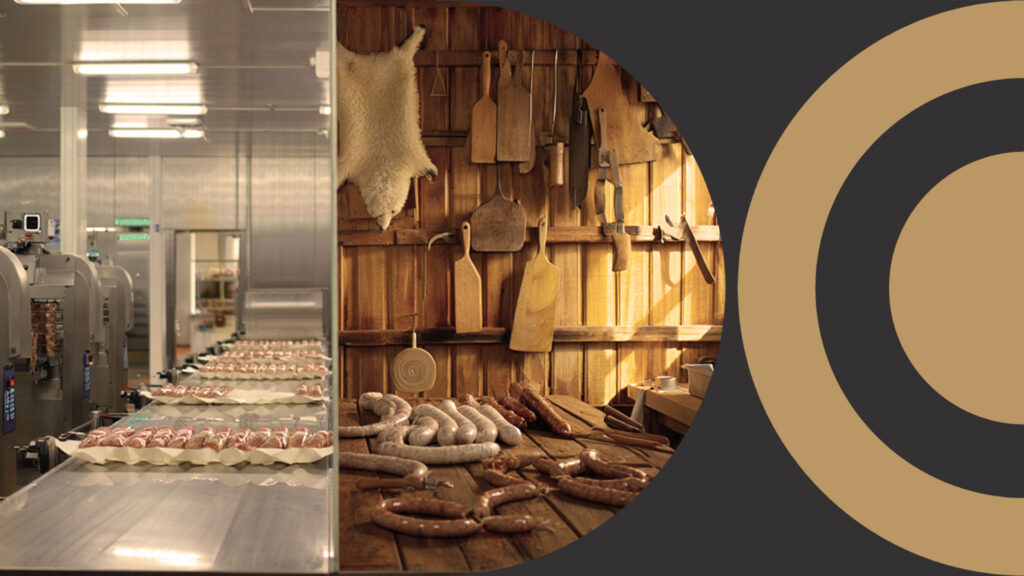The History of Sheep CASING HANK is a journey through time, tradition, and technological progress. For centuries, sheep casings have served as essential tools in the food industry—primarily in sausage production. These natural casings, known for their delicate texture and superior edibility, have stood the test of time, evolving alongside culinary practices and industrial technologies. In this article, we will explore the origins of sheep casing hank, its development through different eras, and its current role in modern food production.
What Is a Sheep CASING HANK?
A sheep casing hank is a bundle of salted and processed sheep intestines, prepared and preserved for use in the food industry. These casings are most commonly used to encase sausages, hot dogs, and other meat products. Unlike artificial casings made of collagen, cellulose, or plastic, sheep casings are completely natural and edible, which enhances the flavor and texture of the final product.
Origins: Ancient Beginnings of Natural Casings
The use of animal intestines as sausage casings dates back thousands of years. Historical records suggest that as early as 1500 B.C., civilizations in the Middle East and China were using sheep and goat intestines to preserve and prepare meats. Sheep casing hank, in particular, became popular due to its thin and tender structure, which made it ideal for creating high-quality sausages.
In ancient Greece and Rome, sausage-making became an art form, and sheep intestines played a central role in their culinary traditions. The Latin word “botulus”, which means sausage, is the root of the English word “botulism”—a reference to the potential danger of poor meat preservation. Yet, when properly cleaned and salted, natural casings like sheep hank were safe, flavorful, and efficient.

Medieval and Renaissance Europe: A Time of Artisanal Expertise
During the Middle Ages, European butchers and charcutiers developed more refined methods for preparing and preserving meat. Guilds and trade organizations established strict guidelines for the use of natural casings, and sheep casings became an industry standard.
By the Renaissance, sausage recipes using sheep casings spread across the continent. German bratwurst, French saucisson, and Italian salsiccia all owe their success, in part, to the fine quality and workability of sheep casing hank. The casings allowed meat producers to craft uniform, visually appealing sausages that held flavor and moisture exceptionally well.
The Industrial Revolution and Early Commercialization
The 19th century marked a turning point in the history of food production. The Industrial Revolution introduced new technologies that transformed traditional sausage-making into a large-scale industry. Despite the emergence of synthetic materials and processing innovations, sheep casings remained popular due to their superior elasticity, permeability, and taste.
Casing preparation also became more systematized. Hanks of sheep intestines were now sorted, salted, and packaged for global trade. This era saw the birth of companies dedicated exclusively to the sourcing, cleaning, and distributing of natural casings, including those from sheep.
Industrial Revolution in Casing Production: Mechanization and Efficiency in the 20th Century
As food production scaled globally in the 20th century, so too did the demand for reliable casing materials. For many manufacturers, sheep casing hank remained the gold standard, especially for high-end sausage products. Several key factors contributed to this continued preference:
- Uniformity: Sheep casings offer consistent diameter and texture, which ensures a standard size for sausages.
- Taste retention: Natural casings enhance flavor by allowing smoke and seasoning to penetrate the meat.
- Edibility: Unlike some synthetic options, sheep casings are thin, tender, and fully digestible.
Technological innovation also improved the processing of sheep casing hank. Machines were developed to assist in cleaning, inspecting, and packaging, making the process faster and more hygienic. However, most steps still required skilled manual handling, especially for delicate sheep intestines.
Globalization and Supply Chain Expansion
With the advent of globalization, the sheep casing industry expanded dramatically. Countries like New Zealand, Australia, Iran, Turkey, and China became major exporters of sheep casing hank, while high-consumption regions such as Europe, North America, and East Asia drove up demand.
International regulations also helped standardize the trade. Food safety organizations implemented strict hygiene guidelines and quality checks to ensure that all sheep casing products met global standards.
Today, sheep casing hanks are processed using ISO-certified procedures and are shipped worldwide under refrigerated or salted conditions to preserve freshness and prevent bacterial contamination.
Modern Food Industry and Continued Preference
In the modern food industry, the History of Sheep CASING HANK is not just about tradition—it’s about performance. Despite competition from artificial casings, sheep casings continue to dominate specific markets, particularly:
- Gourmet sausages and hot dogs
- Halal and Kosher meat products
- Traditional food producers seeking authenticity
- Restaurants and delis that value texture and flavor
Sheep casing hanks are preferred because they offer a “natural bite”—a satisfying snap when consumed. This quality is impossible to replicate with artificial materials.

Technological Evolution in Processing Sheep Casings
One of the most fascinating aspects of sheep casing history is the evolution of processing methods. In the past, the cleaning of intestines was a completely manual, labor-intensive task. Today, advancements have allowed for:
- Enzyme-based cleaning solutions that are more efficient and eco-friendly
- Automated sorting machines that classify casings by size and quality
- Optical scanning for detecting imperfections
- Vacuum packaging systems for extended shelf life
These innovations have made sheep casing hank production cleaner, faster, and more sustainable, without sacrificing the natural qualities that make it special.
Sustainability and Environmental Impact
Another major reason for the sustained popularity of sheep casing hank is its environmental sustainability. Unlike plastic or synthetic casings, which contribute to waste and require petroleum-based ingredients, sheep casings are biodegradable and renewable.
Using animal by-products like intestines also supports zero-waste practices in the meat industry, making full use of animals already raised for consumption. This aligns with the values of eco-conscious consumers and modern food ethics.
Cultural and Culinary Significance
Sheep casing hank is more than a material—it’s a culinary tradition passed down through generations. In many cultures, the process of making sausages with natural casings is a family activity that ties communities together.
Examples include:
- Middle Eastern merguez
- European kielbasa and bangers
- Latin American chorizo
- Asian-style lamb sausages
In all these dishes, sheep casing hanks are not just functional; they are part of the recipe’s authenticity and cultural heritage.
Challenges and Future Outlook
Despite its advantages, the sheep casing industry faces some challenges:
- Supply chain fluctuations due to global trade issues
- Labor-intensive processing that increases production costs
- Perceptions among younger consumers unfamiliar with natural casings
However, with growing demand for organic, artisanal, and authentic food products, the future of sheep casing hank remains strong. Innovations in processing and growing awareness of natural alternatives will likely increase demand further in the coming years.

Conclusion
The History of Sheep CASING HANK in the food industry is a remarkable story of resilience, quality, and evolution. From ancient preservation methods to cutting-edge food technologies, sheep casings have consistently delivered what consumers and producers seek: taste, texture, reliability, and sustainability.
As food trends continue to evolve, so too will the methods for processing and using sheep casing hanks. Yet, their legacy as a premium, natural choice in sausage production is set to continue for generations to come.
Frequently Asked Questions (FAQs)
Sheep casing hank has been used for centuries in traditional sausage making. Its origin traces back to ancient civilizations, where natural casings were the only available option for meat preservation and preparation. The tradition continued across cultures, especially in Europe, the Middle East, and Asia, due to the natural qualities of sheep intestines in producing flavorful and uniform sausages.
Initially, processing was entirely manual, involving skilled workers who cleaned and prepared the intestines by hand. With the rise of industrialization in the 20th century, machinery gradually took over, enhancing consistency, hygiene, and scalability. Today, automated systems, quality control technologies, and cold-chain logistics play a key role in modern sheep casing production
Sheep casing hanks have remained in demand because of their superior texture, natural flavor retention, and consumer preference for authentic meat products. Unlike artificial casings, natural sheep casings provide a traditional bite and appearance that many gourmet and artisanal producers prefer. Their adaptability and biodegradability also support sustainable food production.
Key innovations include automated cleaning and sorting machines, vacuum packaging systems, refrigeration units, and digital quality control tools. These advancements have ensured better safety, extended shelf life, and compliance with international food standards—making sheep casing hank a reliable product in today’s global meat industry.


